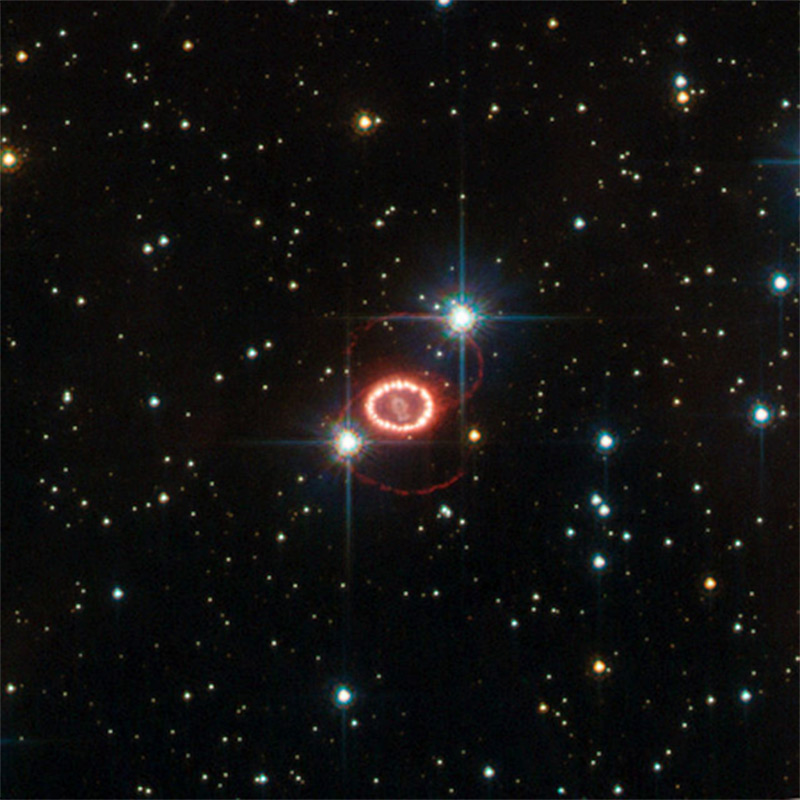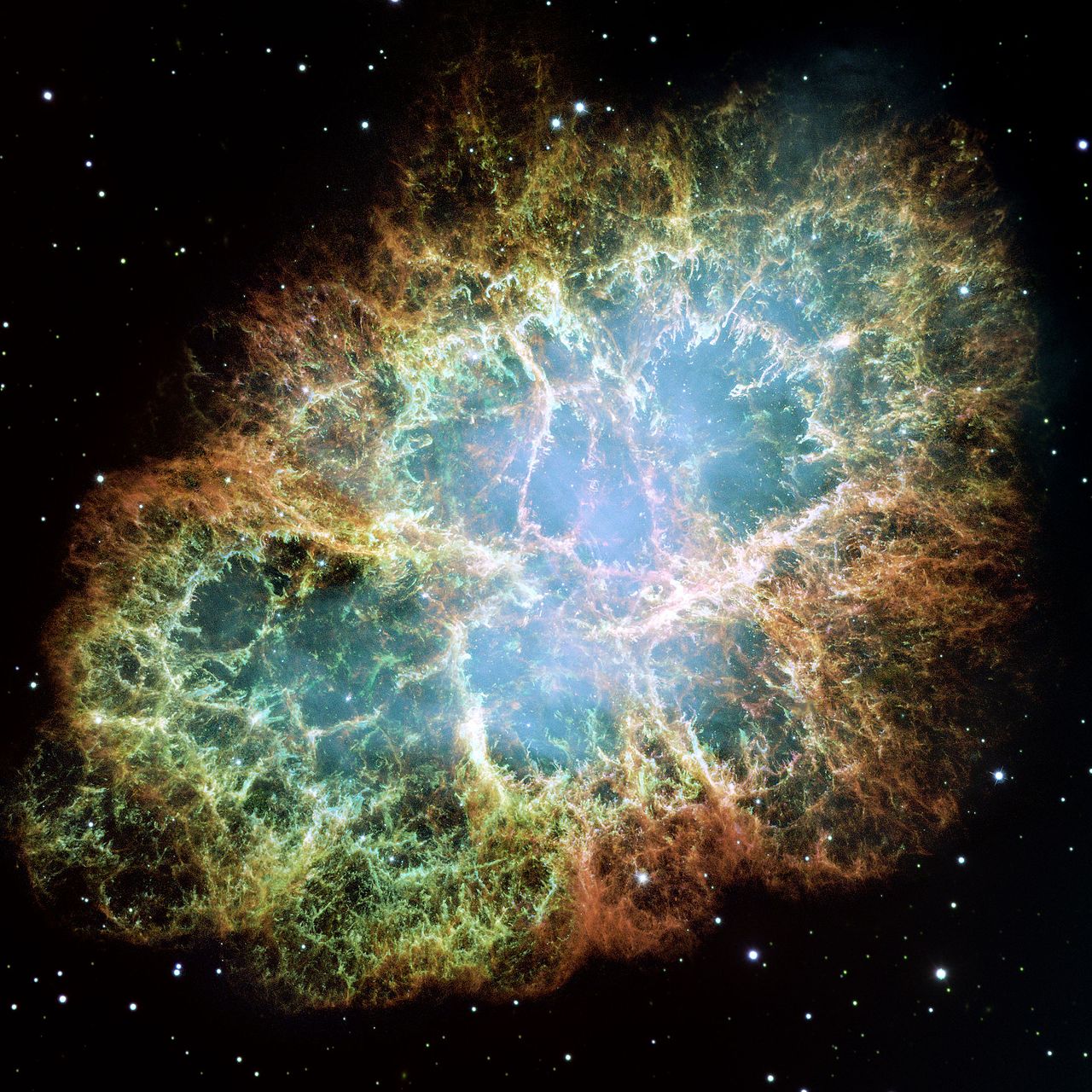13.2: High-Mass Stars
- Page ID
- 64210
High-mass star characteristics include:
- An example of a high-mass star is the red supergiant Betelgeuse; it is 500 times the size of our Sun.
This supernova occurred about 168,000 ly from Earth.
 CC BY 3.0 | Image courtesy NASA and ESA
CC BY 3.0 | Image courtesy NASA and ESAA supernova is an explosion of a star that briefly outshines an entire galaxy, radiating as much energy as an ordinary star like the Sun over its entire lifetime. The supernova will fade from view over several weeks to months.
The star’s core collapses in an instant into a sphere; it simply cannot withstand the immense pressure and gravitational attraction. At collapse a sphere of Neutrons remains. Heavier elements are now produced due to the supernova event, and enormous amounts of energy released. An average high-mass star supernovae within 30 ly of Earth pose a danger to life on Earth, due to the energy and particles released in this type of supernova event. Particles released by the supernova are very harmful to life as we know it. It would be much like being close to an atomic bomb going off.
The Crab Nebula ; M1, a Supernova Remnant.
 Public Domain | Image courtesy of NASA.
Public Domain | Image courtesy of NASA.
- Provided by: Florida State College at Jacksonville. License: CC BY: Attribution

